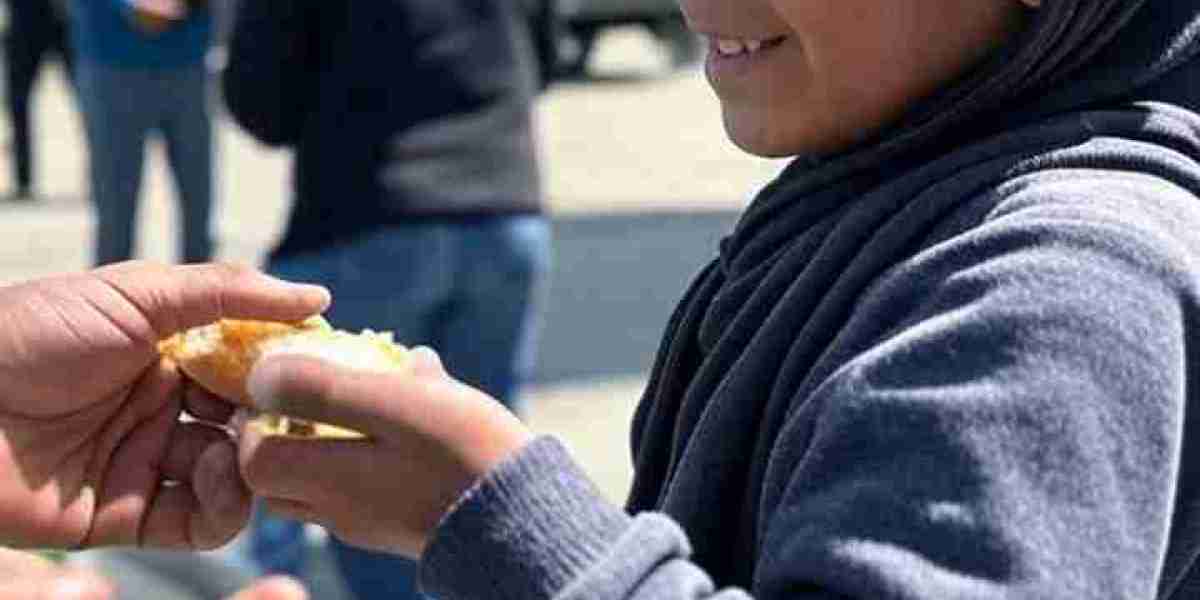The humanitarian crisis in Gaza has left millions of people struggling to access basic necessities, including food. Ongoing conflicts, economic hardships, and restricted access to resources have created severe food shortages, leaving families without enough to eat. Food aid for Gaza is essential to prevent malnutrition, starvation, and long-term health problems. Charities, governments, and international organizations are working to deliver food supplies, but more support is needed to meet the growing demand.
Why Food Aid is Urgently Needed in Gaza
Gaza has faced years of blockade, limiting the import of food, medicine, and other essential goods. The destruction of infrastructure, including farms and markets, has worsened food insecurity. Many families rely on humanitarian aid to survive, as unemployment and poverty rates remain extremely high. Without consistent food aid, children and vulnerable groups face the risk of acute malnutrition, stunted growth, and weakened immune systems.
Food shortages also lead to higher prices, making it difficult for even those with some income to afford basic meals. Many people in Gaza skip meals or eat low-nutrient foods just to survive. Immediate food aid is critical to prevent a full-blown famine and ensure that families have access to nutritious meals.
How Food Aid Helps Gaza’s Population
Food aid programs provide lifesaving support in several ways. The most direct form is through food distributions, where families receive packages containing staples like rice, flour, lentils, cooking oil, and canned goods. These supplies help households prepare meals and maintain their strength. Some organizations also provide ready-to-eat meals, which are crucial for displaced families who lack cooking facilities.
Another key aspect of food aid is nutritional support for children and pregnant women. Malnutrition in early childhood can cause irreversible damage to physical and cognitive development. Specialized food supplements, such as fortified milk and high-energy biscuits, help prevent malnutrition in young children. Pregnant and breastfeeding women also receive additional nutrients to ensure their health and their babies' well-being.
Additionally, food aid supports local economies when possible. Some programs purchase food from local farmers and vendors, helping sustain small businesses even in crisis conditions. This approach not only provides food but also strengthens the community’s ability to recover.
Who Benefits Most from Food Aid in Gaza?
The most vulnerable groups in Gaza depend heavily on food aid. Children, especially those under five, are at high risk of malnutrition, which can affect their growth and learning abilities. Without proper nutrition, they become more susceptible to diseases and long-term health problems. Food aid ensures they receive the vitamins and minerals needed for healthy development.
Elderly individuals and people with chronic illnesses also rely on food assistance. Many cannot work or access healthcare easily, making them particularly vulnerable to hunger. Pregnant and nursing mothers need extra nutrition to stay healthy and support their babies. Displaced families, who have lost their homes and livelihoods, often have no way to buy food and depend entirely on aid.
Refugees and those living in overcrowded shelters face additional challenges, as they may not have proper cooking facilities or storage for food. Ready-to-eat meals and long-lasting food supplies are vital for their survival.
How to Donate Food Aid to Gaza
Donating to Gaza’s food aid efforts can be done in several ways. Many reputable humanitarian organizations accept financial contributions online, allowing them to purchase and distribute food efficiently. Monetary donations are often the most effective because they enable charities to buy supplies in bulk and respond quickly to changing needs.
Some organizations also run sponsorship programs, where donors can fund food packages for specific families or communities. Others offer monthly donation plans, providing sustained support rather than one-time help. Corporate donors and philanthropists can contribute large-scale aid, such as shipments of fortified foods or medical nutrition supplies.
For those who prefer hands-on involvement, fundraising campaigns can be organized in schools, workplaces, or community groups. Raising awareness about the crisis in Gaza and encouraging others to donate can significantly increase the impact of food aid efforts.
Choosing the Right Organization for Food Aid Donations
Not all charities operate with the same level of transparency and efficiency. Before donating, it’s important to research organizations to ensure funds are used effectively. Look for well-established NGOs with a strong presence in Gaza, such as UNRWA (United Nations Relief and Works Agency), the World Food Programme (WFP), or reputable international charities like Islamic Relief and Save the Children.
Check if the organization publishes financial reports and details about how donations are spent. Trustworthy groups will show exactly how much of the funds go directly to food aid versus administrative costs. Avoid organizations with unclear operations or those that lack third-party verification from watchdog groups like Charity Navigator.
The Long-Term Impact of Food Aid in Gaza
While emergency food aid saves lives in the short term, long-term solutions are also needed. Sustainable food security programs help communities grow their own food, rebuild agriculture, and create jobs. Some aid groups support urban farming initiatives, teaching families how to grow vegetables in small spaces. Others provide fishing equipment and livestock to help people regain self-sufficiency.
Education on nutrition and food preservation is another critical aspect. Teaching families how to make the most of limited resources can reduce waste and improve health outcomes. School feeding programs ensure children receive at least one nutritious meal a day, keeping them healthy and encouraging attendance.
Beyond immediate hunger relief, food aid helps stabilize communities. When people are not desperate for food, they can focus on rebuilding their lives, seeking education, and working toward a better future. A well-fed population is more resilient and better able to recover from crises.
How to Spread Awareness and Encourage More Donations
Raising awareness about Gaza’s food crisis can inspire others to contribute. Sharing verified information on social media, writing articles, or organizing community discussions can help educate people about the urgent need for food aid. Many are unaware of the severity of the situation and may be willing to help if informed.
Collaborating with local mosques, churches, schools, and businesses can amplify efforts. Fundraising events, charity dinners, or donation drives can engage more people in supporting Gaza. Petitions and advocacy campaigns can also pressure governments and international bodies to increase aid shipments to the region.
Conclusion:
Food aid for Gaza is not just about providing meals—it’s about saving lives, protecting children, and giving hope to a suffering population. The crisis is severe, but with continued support, families can survive and eventually rebuild. Whether through donations, fundraising, or advocacy, everyone can play a role in alleviating hunger in Gaza.
The need is urgent, and every contribution, no matter how small, helps. By supporting reliable aid organizations and encouraging others to do the same, we can ensure that more families in Gaza receive the food they desperately need. Together, we can make a meaningful difference in one of the world’s most critical humanitarian crises.





